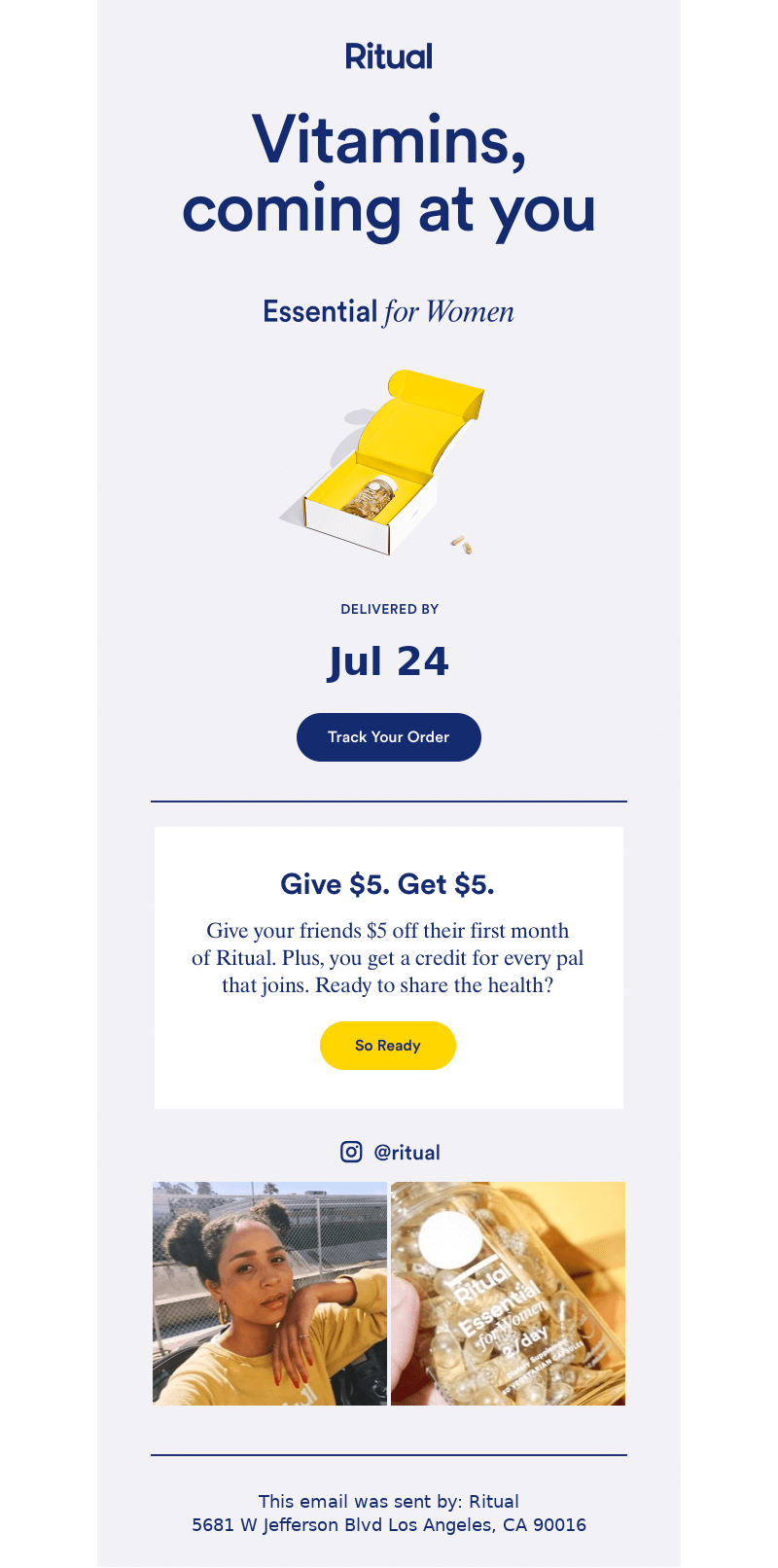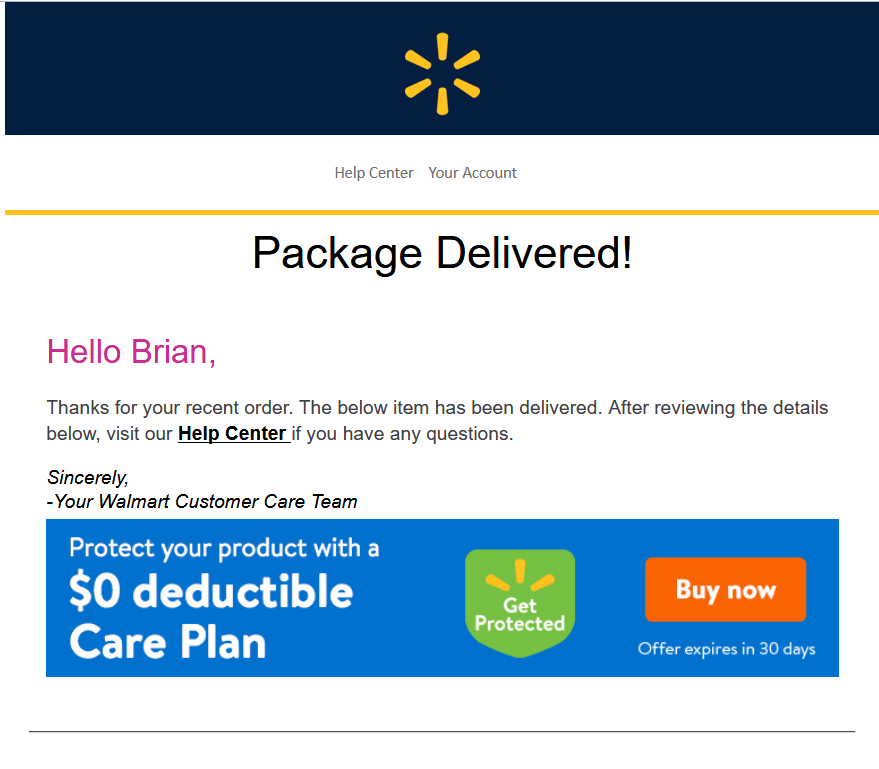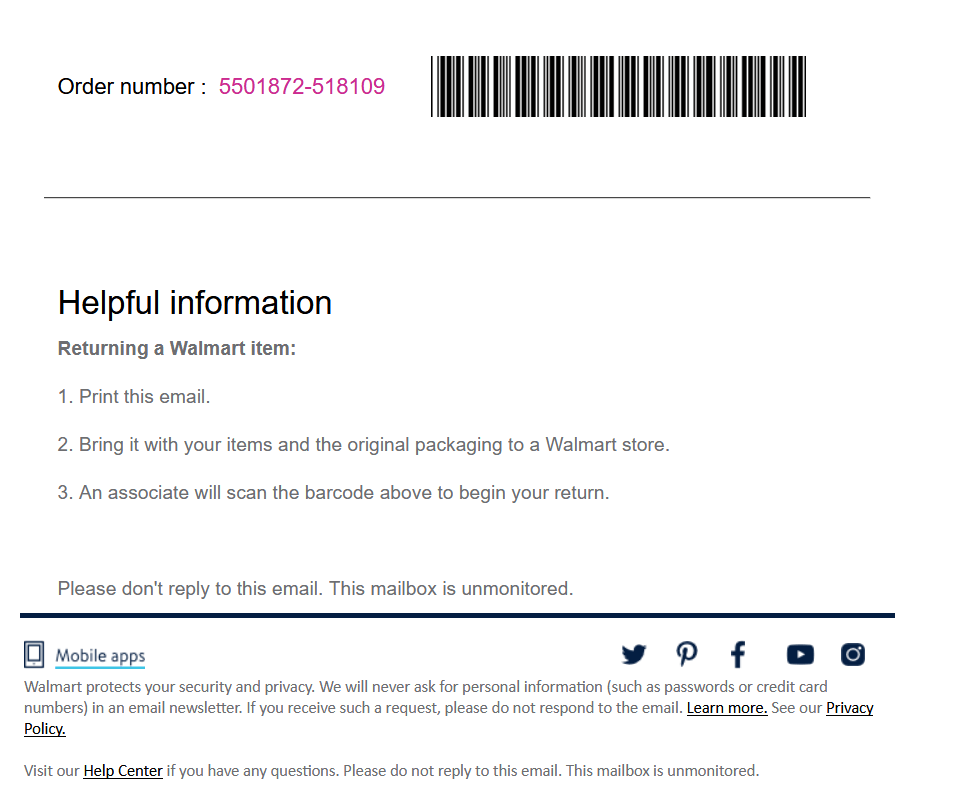When it comes to building an online retail brand, few things are more important than building a base of customers. And with rising competition meeting you at every turn, customer acquisition costs continue to skyrocket.
This shift has caused many brands to turn their focus inward and look at retention marketing. After all — according to Harvard Business Review, the cost to acquire a new customer is 500% more expensive than the cost to retain one.
Email marketing remains a sound channel to reach and communicate with existing and net-new customers. While many brands drill down into creating new promotional email campaigns, it’s important to also look at how you are delivering post-purchase messages.
Transactional emails — those communicating order confirmations, shipping, and logistical details — are a fundamental part of the eCommerce experience, but are often neglected by marketing and campaign teams. In fact, these emails have an 800% higher open rate than any other type of email — which poses a great opportunity to refine and optimize those campaigns to delight purchasers and get the most out of returning customers.
When it comes to transactional emails, template defaults are often left in place, showing a lack of care and world-class service your customers expect. This is a costly mistake that can be easily remedied.
Let’s dive into what makes a transactional email great and what steps your brand can take to start making the most of your post-purchase customer communications.
Transactional vs marketing emails: What’s the difference, and why does it matter?
When you’re told to optimize an email campaign, your instinct is to jump into a queue and make edits to all the newsletters, sales, and other traditional “marketing” emails.But this approach leaves out some of the emails your customers are most likely to interact with.
Transactional emails are sent out based on specific engagements your customer has with the business, such as:
- Placing an order
- Filling out a form
- Making a return
Rather than a promotional email incentivizing a shopper to shop, a transactional email simply communicates information to customers after they’ve interacted with a company. Transactional emails provide more than just a paper trail to a shopper — they’re an opportunity to keep the customer engaged and returning for more.
A customer needs to be served up different language, value propositions, and incentives depending on how they’re navigating through the purchasing process.
Consider your transactional email campaigns the equal reaction to their action. The more actions you’re able to predict, map out, and respond to, the more effective your overall email automation strategy will be.
Let’s take the example of an actual purchase. While a single receipt will certainly be read by the customer, it’s just the beginning of that journey.
There are many more transactions that actually occur here. The order is typically:
- Received
- Processed
- Shipped
- Delivered
Digitally-adaptive customers have come to expect a lot of information after they order. Look at the Domino’s Pizza Tracker, for example. Customers can see exactly where their pizza is, from payment through to delivery and everywhere in between.
![]() Source: Domino’s Pizza
Source: Domino’s Pizza
We’re in an age where there is no such thing as too much information when it comes to fulfillment. If available as close to real-time as possible, transactional emails and alerts can change a customer’s experience from so-so to memorable in a short amount of time.
So, why are brands so behind the curve with transactional emails? For many, it’s simply because they haven’t shifted their focus to be on customer retention — but this is a global change that is currently happening with retail brands across all verticals.
That’s not to say that brands aren’t already creating rockstar transactional emails — let’s take a look at how some major brands are doing this moving into 2020.
Order Confirmation Email
Immediately upon receiving an order, you should send an email to acknowledge the transaction.
This is your first communication with a customer who already made a purchase. The focus should be on giving them the information they need about the order, while also turning them into a repeat customer with other incentives.
Check out this Care/of email:
 It relays the order information immediately, but it is also chock-full of other offers. In this email, readers are:
It relays the order information immediately, but it is also chock-full of other offers. In this email, readers are:
- Incentivized to share their purchase with a referral code,
- Able to view their account for more information,
- Prompted to download the app to see when they’ll get their items, and
- Given links to the brands social media accounts.
You’ll see carefully sprinkled CTAs throughout their email to continue selling to a proven customer who already made a purchase. As the customer scrolls, they’ll see help topics, deals, and more.
It’s important to keep your customers interested, so work towards making these transactional emails an extension of your website and branding. Use bright visuals, clickable buttons, and rich information to turn a boring, flat email into an interactive brand catalog.
Order Shipped Email
The only thing a customer is more interested in than an order being received is an order being shipped. Let’s look at what another vitamin company, Ritual, sends to their customers.
 Ritual uses the space below the shipment reminder to cross promote a referral bonus and remind shoppers of their Instagram account. It’s a triple play.
Ritual uses the space below the shipment reminder to cross promote a referral bonus and remind shoppers of their Instagram account. It’s a triple play.
Order Delivered Email
It may seem unnecessary, but you should also send a confirmation when your order is delivered.
People are busy, and your customer may not be home when your package arrives. Package delivery services are different for each person’s home too — just because the package was delivered doesn’t mean the recipient is aware.
 And Walmart takes this final opportunity to upsell an extended warranty.
And Walmart takes this final opportunity to upsell an extended warranty.
That’s not all the company does. Walmart is a model of efficiency. After the product details,, Walmart helps its own staff by emailing a scannable barcode for returns.
 It also provides links to social media, mobile apps, and the help center. Like all the marketing emails above, you’ll notice this one came from an unmonitored mailbox. That’s because it is a transactional email.
It also provides links to social media, mobile apps, and the help center. Like all the marketing emails above, you’ll notice this one came from an unmonitored mailbox. That’s because it is a transactional email.
Scoping Out the Competition
Once you understand the transactions, you need personalized email responses to them.
The best place to get an idea of what others are doing is MailCharts. Over 10,000 companies use this service to keep an eye on email marketing trends without having to subscribe to their competition.
Really Good Emails is another great place to discover upcoming email marketing trends. You’ll find basic structures and frameworks that can be really helpful in inspiring your own unique templates. Think of it as Github for marketing emails.
Even though these are automated, you should still sound human, so make them friendly, exciting, and actionable. Status bars, ads to similar products and accessories, reminders of your charity involvement; so many “riders” can be slipped into a properly branded transactional email.
4 Tips to Improve Transactional Emails
Now that you understand the fundamentals of a great transactional email, it’s time to improve your own. Here are four ways to get started.
1. Reduce return complexities by clearly communicating processes.
Like the Walmart example above, easing the return process can save your company on operational expenses. By including a barcode and order number in the transactional email, it makes it easier for brick-and-mortar staff to easily facilitate a return in-store.
If you don’t have a brick-and-mortar store, there are still ways in which you can reduce return rates with transactional emails. Make sure return instructions and deadlines are clearly communicated in post-purchase emails. That way, you’ll reduce customer inquiries about returns, which your customer service team will appreciate.
2. Strike while the iron is hot by asking for up-front feedback.
Customer feedback is vital for any online business — it helps improve existing products, discover potential pain points you can resolve, and build a stronger customer relationship. These are all high-ranking factors when it comes to customer retention.
Solicit feedback at every step of the customer purchase journey. Dominos doesn’t just give customers access to a delivery tracker — right after the order is placed, they ask customers to rate the speed and quality of the food, delivery, and driver. This comprehensive survey lets the company pinpoint exactly where any problems (or successes) may have occurred in the delivery process.
3. Ask for a simple product review.
Online reviews are more influential than ever, as BrightLocal found 91% of 18-34 year olds trust online reviews as much as personal recommendations. The same survey found 68% of consumers will leave a review if asked, which makes this an easy add to transactional emails.
Asking for reviews on online platforms — from your owned website, to eCommerce marketplaces like Amazon and Walmart, to platforms like Yelp and Google — turns your customer into a brand advocate, and builds social proof.
4. Make easy add-on product recommendations.
Both Ritual and Walmart do a great job of cross-selling and upselling in their transactional emails. A customer already purchasing a product may be interested in an extended warranty, accessory, or even joining a loyalty program. You can also offer referral programs or upsell to a higher-tiered product or subscription plan.
Transactional emails are a great upsell/cross-sell opportunity that shouldn’t be ignored. Regardless of the improvements you want to make to your transactional emails, make sure you are making the changes in a thoughtful way. Depending on your email service provider, consider doing an A/B test to measure the impact of the changes before you set anything in stone.
Conclusion
Automation is the future of email marketing and transactional emails are a key component of humanizing that experience. With personalized transactional emails, you’ll maximize every engagement with your company, turning it into multiple engagements effortlessly.
The key is understanding when to send transactional emails — and filling them with vibrant, clickable, digestible information that’s relevant to the transaction at hand.
Following these transactional email best practices will get your business get more out of every customer purchase. These tips will help you get repeat purchases, improve customer loyalty, and streamline returns.
